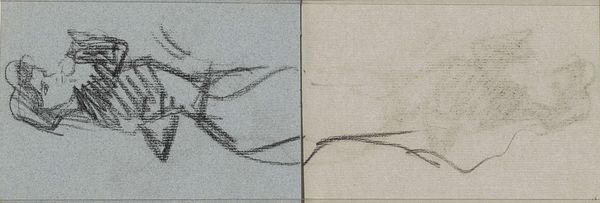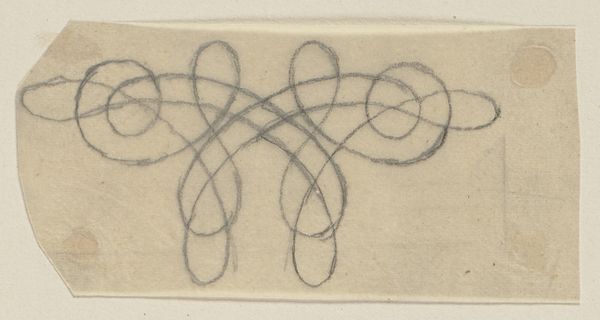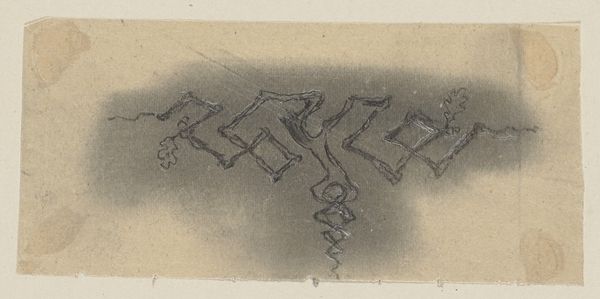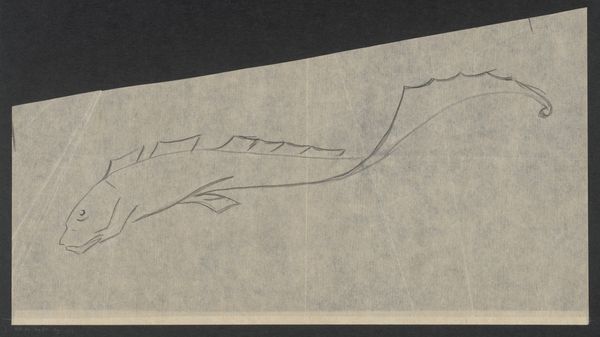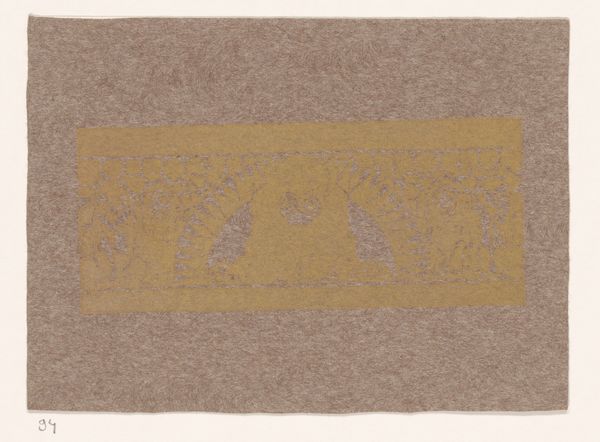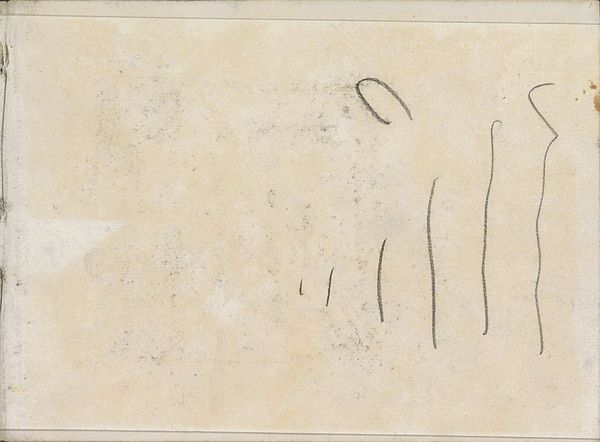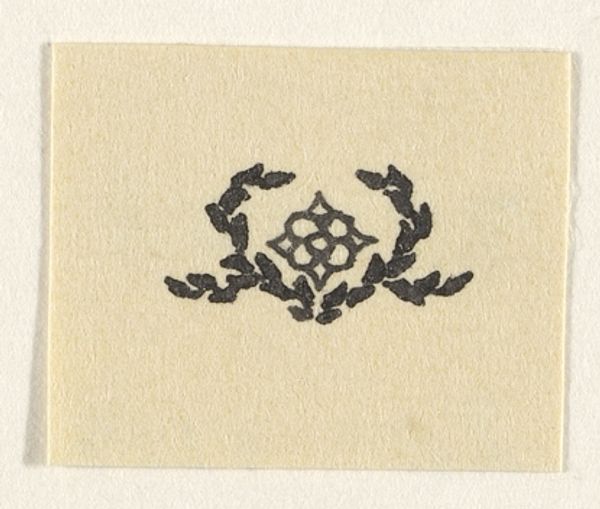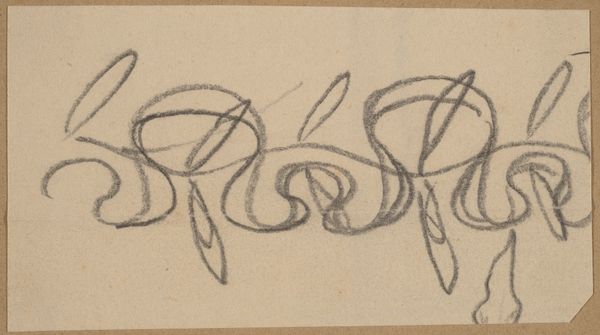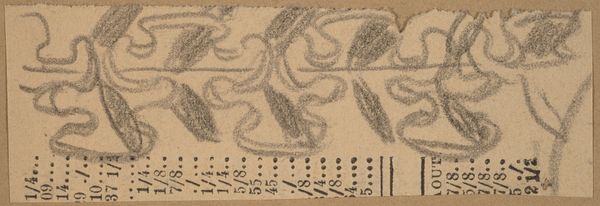
drawing, graphic-art
#
drawing
#
graphic-art
#
art-nouveau
#
geometric
#
line
Dimensions: height 16 mm, width 98 mm
Copyright: Rijks Museum: Open Domain
Curator: Welcome. We’re looking at "Vignette," a graphic work on paper by Julie de Graag, made sometime between 1888 and 1924. It’s currently held here at the Rijksmuseum. Editor: My first impression is that it's an understated yet elegant line drawing. It feels both simple and refined. There is balance to the whole visual composition. Curator: It’s a drawing demonstrating elements of the Art Nouveau style. We should keep in mind that De Graag engaged deeply with the artistic currents of her time. "Vignette" illustrates this by incorporating simplified, decorative patterns reminiscent of textile or wallpaper design. Her drawings, often produced on a modest scale like this piece, offered a vital contribution to commercial graphic arts, as an expression of affordable art for broader societal consumption. Editor: The repetitive pattern along the strip, which seems both floral and geometric, holds your eye moving across the paper. This linear quality feels fundamental to the work. I want to read it for a language of shapes and implied spaces that create depth. It suggests infinity. Curator: What makes de Graag particularly interesting is her navigation between fine art and decorative arts, and the kind of labour often overlooked by historians. Her process forces us to reflect on this distinction and question these art hierarchies of her time and perhaps still relevant today. Editor: I see it as a successful study in how minimal elements—line and shape—can generate visual richness, without heavy use of color or texture. Curator: It shows De Graag's ability to engage with industrial applications while still injecting artfulness and aesthetic consideration. It offers insights into the broader application of the graphic arts movement, by creating patterns for commercial or utilitarian goods, thus influencing cultural life through daily surroundings. Editor: And what at first seems simple, becomes an interplay between the precision and elegance. I am stuck thinking about that and the potential complexity of form and line it implies. Curator: Indeed. Examining her graphic design opens a window to a richer view of her practice, prompting us to think about how production is integrated into an environment and everyday experiences. Editor: This little work ends up making you reconsider how art can shape environments through understated details and precise design choices.
Comments
No comments
Be the first to comment and join the conversation on the ultimate creative platform.



